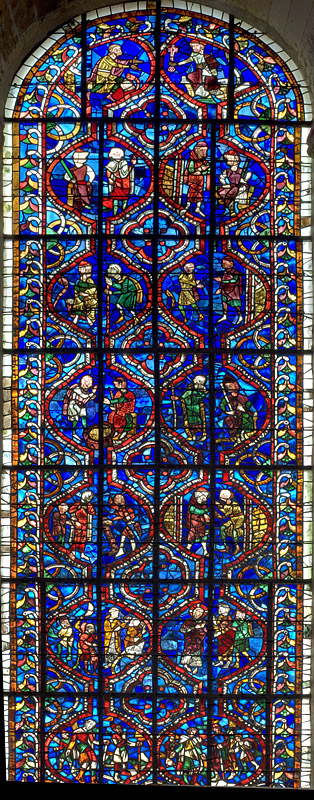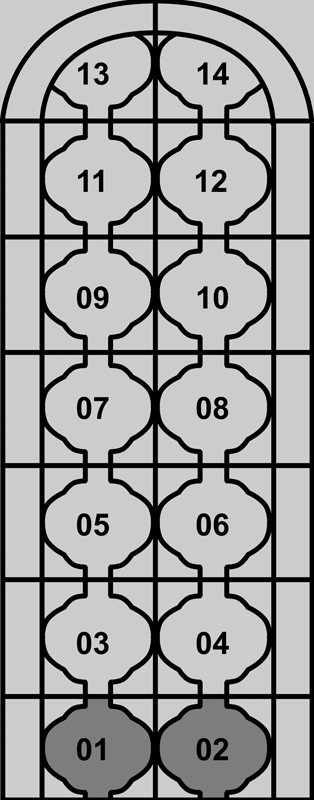


11 - Two men conversing (badly eroded)
12 - Two men conversing
09 - Two men conversing
10 - Two men conversing
07 - Two men conversing over a sack of corn
08 - Two men conversing
05 - A man presenting a scroll (a bill?) to two others
06 - Two men conversing
03 - Unidentified scene (listening to a sermon?)
04 - Christ talking to two men (Apostles?)
After the initial scene of keys being handed over come seven panels with the same basic structure (a nice visual example of the rhetorical device of amplificatio). In each we find a man in a red skull cap, usually seated (presumably the steward), who converses with a standing male figure, depicted differently in each case (some of his master's debtors?). One of these men has an open sack of corn - the others have no distinctive attributes. These panels may represent a rather prolix depiction of Luke 16:5-7, where the wily steward discounts each man's debt, an explanation which also could also fit panel 05, where a man holds out a scroll which could be a tenant's accounts. If panel 04 represents Christ recounting his parable (much like the famous 'visual incipit' in the Good Samaritan window at Chartres), then this only leaves panel 03 - the enigma at the end of the conundrum, as it were. The only possible explanation I can think of for this panel (and I must stress this is purely idle speculation) is that it show the congregation listening to a homily on the parable, with three figures paying careful attention while a fourth drives away the little devil sent to distract her. I am, of course, open to other suggestion! As is so often the case, the loss of the final two panels in the original sequence has meant the loss of crucial contextual information that might have made the meaning clear.